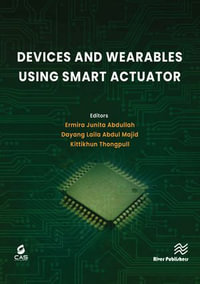
The Non-Equilibrium Green's Function Method for Nanoscale Device Simulation
By: Mahdi Pourfath
eText | 5 July 2014
At a Glance
eText
$159.01
or
Instant online reading in your Booktopia eTextbook Library *
Read online on
Desktop
Tablet
Mobile
Not downloadable to your eReader or an app
Why choose an eTextbook?
Instant Access *
Purchase and read your book immediately
Read Aloud
Listen and follow along as Bookshelf reads to you
Study Tools
Built-in study tools like highlights and more
* eTextbooks are not downloadable to your eReader or an app and can be accessed via web browsers only. You must be connected to the internet and have no technical issues with your device or browser that could prevent the eTextbook from operating.
ISBN: 9783709118009
ISBN-10: 370911800X
Series: Computational Microelectronics
Published: 5th July 2014
Format: ePUB
Language: English
Publisher: Springer Nature
You Can Find This eBook In
Non-FictionEngineering & TechnologyElectronics & Communications EngineeringElectronics EngineeringTechnology in GeneralNanotechnologyIndustrial Chemistry & Manufacturing TechnologiesOther Manufacturing TechnologiesPrecision Instruments ManufactureComputing & I.T.Graphical & Digital Media ApplicationsComputer-Aided Design CAD
This product is categorised by
- Non-FictionEngineering & TechnologyElectronics & Communications EngineeringElectronics Engineering
- Non-FictionEngineering & TechnologyTechnology in GeneralNanotechnology
- Non-FictionEngineering & TechnologyIndustrial Chemistry & Manufacturing TechnologiesOther Manufacturing TechnologiesPrecision Instruments Manufacture
- Non-FictionComputing & I.T.Graphical & Digital Media ApplicationsComputer-Aided Design CAD
- Non-FictionSciencePhysicsMaterials & States of MatterCondensed Matter Physics including Liquid State & Solid State Physics
- Non-FictionComputing & I.T.Graphical & Digital Media Applications
- Non-FictionSciencePhysicsMaterials & States of Matter























